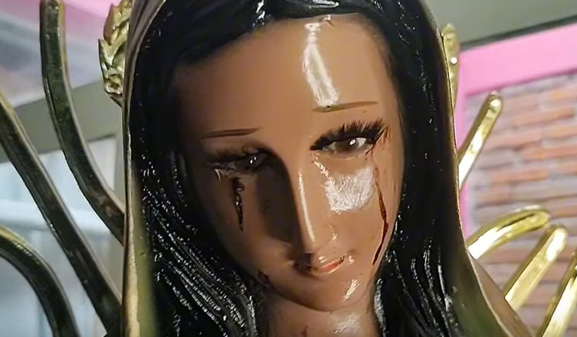

Our Lady of Guadalupe weeps tears of blood, Morelia Mexico
 |
 |
The Virgin Mary with tear stained cheeks.
June 19, 2024 - Reported [here]. First Case to Be Studied after Vatican Reform.
Melchor Mondragón saw the image of the Virgin of Guadalupe in his home with marks on her face on Sunday, June 2, 2024. He approached the image and saw what seemed to be red tears running down her cheeks. In the Worker colony of the city of Morelia, Mexico, an alleged case has occurred of an image of the Virgin of Guadalupe weeping blood. The Archdiocese of Morelia called for caution and prudence both by the people as well as the media, until a pronouncement is made after a full investigation. The family asked Father José de Jesús Alcázar, parish priest of the church of the Most Holy Trinity in the city of Morelia, to observe the image.
Sister Daniela Del Gaudio, Directress of the Observatory of Apparitions and Mystical Phenomena of the international Pontifical Academy of Mary, clarified the implementation of the new norms in an interview with SIR Agency, which ZENIT took up in an article on June 2. The nun said that “the new norms are useful for Bishops, in the first place, because the more detailed norms make possible a better orientation of the path of discernment, which Prelates are called to follow, in communion with the Dicastery.” To add the statement “of supernatural nature” to the “nihil obstat,” “underscores that these phenomena do not become objects of faith, that is, are not binding for believers. This error has happened especially in some parts of the world.” The Archdiocese of Morelia issued the following press note on its social networks, signed by the diocesan Director of Communication, Father Ángel David Arias: “It’s necessary to point out the need for caution when addressing such a delicate subject as that of the alleged miracle. The Catholic Church has always been characterized for its prudence in such matters, avoiding free disqualifications or affirmations, without the necessary foundation. The Archdiocese of Morelia is taking the necessary measures to investigate the situation in a profound and exhaustive way, so that it is too soon to issue a definitive pronouncement about this.”
|